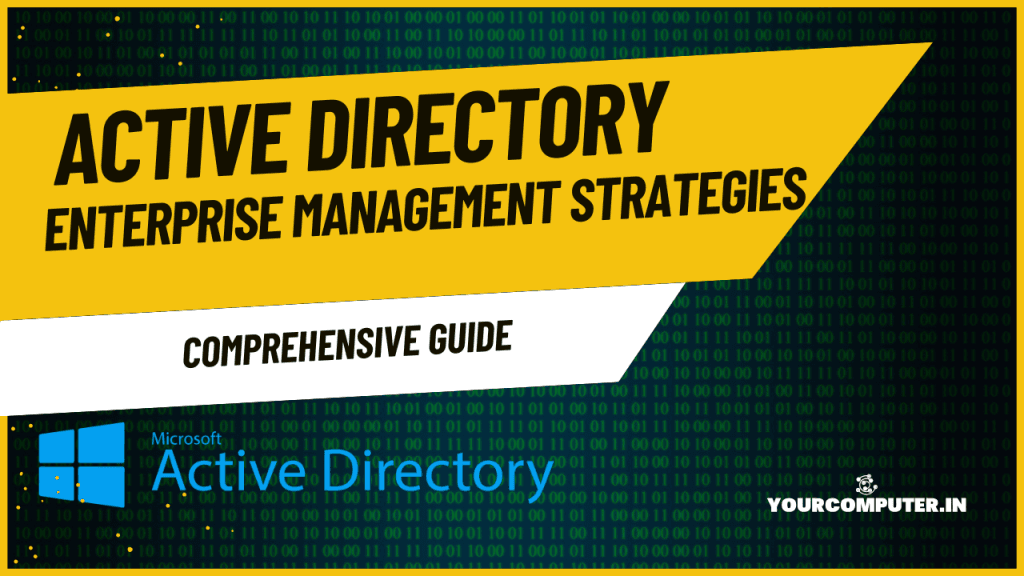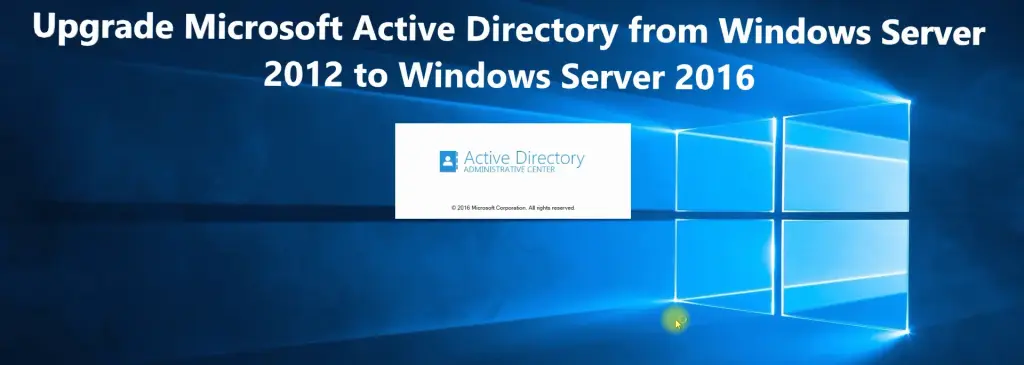Introduction
Managing Active Directory (AD) in an enterprise environment requires meticulous planning and robust strategies. Enterprises face challenges like maintaining scalability, ensuring security, and meeting compliance demands. A well-structured AD management strategy not only ensures seamless operations but also minimizes risks and enhances administrative efficiency.
This guide provides actionable insights into designing and implementing effective enterprise AD management strategies.
This article is a part of our Active Directory Tutorial guide: What is Active Directory? 20 Articles Guide for IT Professionals

Organizational Structure
Proper organizational structure is the backbone of efficient AD management. It ensures logical grouping, streamlined administration, and better resource control.
OU Design
Organizational Units (OUs) help group objects like users, computers, and groups within AD. An ideal OU structure balances simplicity and functionality:
- Scenario: An enterprise with offices in multiple regions creates OUs for each region, such as
North America,Europe, andAsia. Under these, sub-OUs likeUsers,Computers, andGroupsorganize resources further. - Best Practice: Avoid deep nesting; keep structures consistent across the organization.
Site Topology
Designing an efficient site topology ensures replication traffic is optimized and users connect to the nearest domain controller.
- Scenario: A company with offices in New York, London, and Sydney creates sites aligned to these locations. Site links connect regions based on WAN speed and cost.
Trust Relationships
Trust relationships allow resource access between different domains or forests.
- Example: A parent company establishing a two-way trust with a subsidiary’s domain ensures mutual resource access.
Administrative Model
A tiered administrative model minimizes risks by delegating control based on roles:
- Example:
- Tier 1: Full AD administrators.
- Tier 2: Regional IT teams managing their respective OUs.
- Tier 3: Helpdesk staff with permissions to reset passwords or unlock accounts.
Policy Management
Well-defined policies ensure consistency and compliance across the enterprise.
GPO Strategy
Group Policy Objects (GPOs) enforce rules like password policies and software installations.
- Scenario: Applying a GPO at the domain level for password complexity ensures all users meet security standards.
- Best Practice: Use GPO filtering to apply policies only to specific groups, reducing unintended impacts.
Check out our article Active Directory Group Policy Management: Best Practices to know about the best practicies
Security Policies
Security policies should cover account lockout thresholds, auditing, and MFA integration.
- Example: Configuring a lockout policy to temporarily disable accounts after five failed login attempts prevents brute-force attacks.
Check out Active Directory Security Groups: Management and Best Practices
Compliance Requirements
Align AD configurations with industry regulations like GDPR, HIPAA, or ISO 27001.
- Scenario: Logging all user login events helps meet audit requirements for access tracking under compliance mandates.
Check out Comprehensive Active Directory Audit Guide for more details
Change Management
Establish a change management process to review and approve AD modifications.
- Example: Before altering a critical GPO, changes should be tested in a staging environment to avoid disruptions.
Resource Management
Efficient resource management is crucial for maintaining productivity and minimizing errors.
User Provisioning
Automate user account creation to ensure consistency and reduce manual errors.
- Scenario: A script that provisions new employees based on templates ensures they are added to the correct OUs and assigned relevant group memberships.
Application Access
Centralize application access via AD groups.
- Example: An HR application requires access control. By creating a group named
HR-App-Accessand adding HR staff as members, permissions can be managed efficiently.
Resource Delegation
Delegate control to reduce the burden on AD administrators while maintaining security.
- Scenario: Allowing a regional IT team to manage user accounts within their OU without granting domain-wide access.
Monitoring Systems
Regularly monitor AD for unauthorized changes or performance issues.
- Example: Implementing tools like Microsoft’s Advanced Threat Analytics (ATA) to detect suspicious activities, such as a user being added to a privileged group unexpectedly.
Check out Active Directory Performance Optimization Guide to know more
Documentation and Standards
Standardized documentation and procedures are essential for maintaining an organized and secure AD environment.
Documentation Requirements
Maintain records of OU designs, site topologies, GPO settings, and trust configurations.
- Example: Use a centralized documentation platform to store network diagrams, administrative procedures, and configuration guides.
Naming Conventions
Consistent naming conventions simplify administration and reduce confusion.
- Example: Name user accounts as
FirstName.LastNameand groups with prefixes likeDept-Resource.
Change Procedures
Every modification to the AD environment should follow a formal change process, including testing, approval, and documentation. This ensures changes are executed safely and are traceable for auditing purposes.
- Example: When granting elevated permissions to a user, the request must go through an approval process where the department head signs off on the change, ensuring proper authorization.
Conclusion
Implementing robust Active Directory management strategies is essential for maintaining security, ensuring operational efficiency, and meeting compliance requirements in a growing enterprise environment. By following best practices in organizational design, policy management, resource management, and documentation, businesses can optimize their AD infrastructure, enhance user experience, and secure sensitive information.
Strategy Implementation
Effective implementation of an AD management strategy requires collaboration across IT teams, constant monitoring, and ongoing optimization. Each strategy component must be regularly reviewed to ensure it remains relevant to the organization’s needs.
Success Metrics
Monitor success by evaluating user provisioning times, GPO compliance, application access management, and the effectiveness of monitoring systems. Regular audits and performance reviews will identify areas for improvement.
Future Planning
As technology evolves and business needs change, AD management strategies must adapt. Regularly reviewing and updating your AD infrastructure, policies, and practices ensures that your environment remains secure, compliant, and optimized for growth.
There some more best practicies that can be found in the Microsoft article
- Why should you automate Active Directory cleanup? - 17 June 2025
- Troubleshooting: Unable to Add Instance Failover Group to Azure SQL Managed Instance - 4 March 2025
- 10 Azure Virtual Desktop (AVD) Cost-Optimization Strategies for 2025 💡💰 - 22 February 2025



